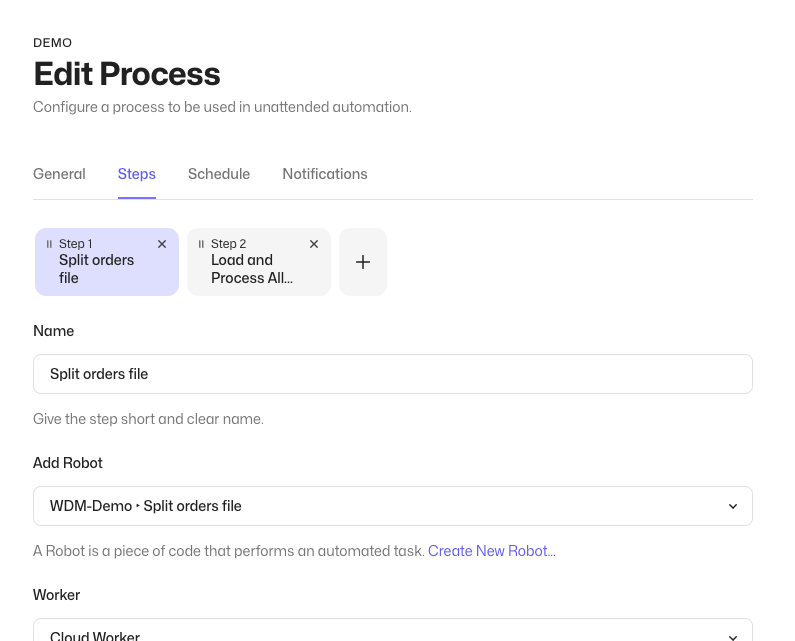Step configuration
One of the first things you do when setting up a new process or when configuring an existing one (something that you may do periodically) is to configure the step(s).
Read on (past the screenshot) to learn about the different options available when configuring steps!

Name
This is the name of the step. A short, clear and meaningful text will ensure that everyone knows what this step is about. It will be visible in multiple views, such as the process view.
Robot
Select the robot that will be used to process the work items of this step.
Worker
Choose what type of worker will be performing the work:
- Cloud worker - Robocorp-hosted worker
- Self-hosted worker
- Worker groups
Savings / Work Item (optional)
You can set an estimated amount of money that would be saved when processing one work item. This is especially handy if you want to have proper insights into your automation journey.
Environment Variables
Specify environment variables that the worker will have access to.
Use it to store data that you want to be able to configure depending on the environment for example.
Don't use it to store sensitive data (!!) – use the Vault instead
Parallel Executions
Configure the maximum number of parallel workers that will be working on this specific step at any given time. This allows you to drastically increase the speed of your automations.
Note that you are billed for the time spent by the worker: if you have 2 workers running in parallel for 2 minutes, you will be billed 2*2 = 4 minutes.
Execution Timeout
The execution timeout (in seconds) allows you to set a maximum time for the duration of a step run. Any step run that exceeds that value will be automatically terminated.
Start Only After
By default, step runs do not wait for one-another before processing work. In practice, this means that if you have 3 steps in your process, you could have all 3 work items processed at the same time.
Tick the option All work items from previous steps are either done or failed to ensure that this step waits for the previous ones to be completed before starting.
This is especially useful if you have a reporting step that needs to wait for the previous steps and work items to be fully processed before starting (remember to set the parallel executions to 1 for that reporter!)
Note 1: this option is only available for the 2nd step going forward.
Note 2: this option is not available for "Done Items Forwarding"
Priority
Specify the priority for the order of execution for step runs that are queueing to the same worker.
Use Desktop Connection
Tick this option for Remote Desktop Protocol (RDP) based automations.
This will enable multiple options:
- Do not sign out after each step run
- Enable video streaming
- Maximum duration (in seconds) for desktop login
Read more about Windows Desktop automation